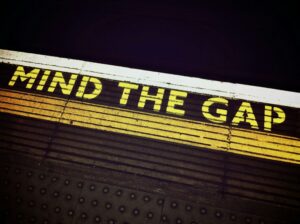Allegories of the cave: the Tham Luang cave rescue revisited
Remember the Thai cave rescue? True, much else has shaken and shocked the world since then. Nonetheless, let’s take the time to revisit the episode and shed a new light on a memorable moment of human solidarity, ingenuity and, last but not least, modernity.
During the media coverage, no phrase was used more often than the ‘unfolding drama’ of the Thai cave rescue. With hindsight, the cave’s setting, the mission’s complexity and the variety of actors involved in the process were nothing short of those in a drama’s plot, following a three-act-structure.
An unfolding drama. The unfolding drama.
Act I – Setting the stage:On June 23, the junior ‘Wild Boars’ football team – twelve minors along with their 25-year-old coach – entered the Tham Luang cave, where they had planned to have a birthday party. Suddenly, monsoon rainfalls caught them off guard and forced them to flee ever deeper into the more than ten-kilometre underground system. Rising water levels and strong currents inside the cave complex quickly cut the group from the outside world where, in the meantime, the FIFA World Cup was gathering crowds in front of the screens.
Act II – The thickening of the plot:The following rescue operation soon reached an extraordinary scale, involving thousands of people from dozens of countries: rescue workers, soldiers, medics, journalists and volunteers, all meeting as strangers in the face of a daunting challenge.
From the outset, the operation was a race against time since the next rainfall loomed large over the search. At first, the boys’ fate remained unknown. Were they all alive and well? How many food supplies did they have between them? Was there any chance? After nine days of searching, British divers finally found the group, four kilometres inside the cave. Written messages were exchanged and phone lines were established between the boys and their families. The first sigh of relief was global, yet the mission’s complexity had by now become crystal-clear.
Three main options started to be floated. Each entailing its very own and very serious risks.
- Would the boys have to wait until the end of monsoon season? For possibly several months?Would it be possible to provide them with food and water, artificial lighting to emulate day and night, as well as a daily programme of activities to keep them focused?
- Could a rescue shaft be drilled down hundreds of meters? Through the mountain’s soft limestone? Would it be possible to determine the drill’s right starting point, and to get the necessary machinery up there?
- Would the world’s most experienced cave divers be able to teach 12-year-old non-swimming children the skills necessary to dive their way through the flooded parts of the cave? With zero visibility?Was Elon Musk’s surprise advance to engineer ‘kid-sized submarines’ realistic? Would the water pumps keep up, or would additional monsoon rains conclude the story?
Act III – The unravelling:On July 8, with heavy monsoon forecast for later in the week, the rescue operation started and made rapid progress. Shortly before this pivotal moment, however, a Navy diver died during underwater preparations when he ran out of oxygen, resulting in a tragic stroke of fate at the episode’s climax. The boys’ eventual extraction involved more than 90 divers and consisted of an 11-hour round-trip, with each boy being taken out individually, under anaesthesia.
When the first four boys’ rescue was confirmed, the sigh of relief was immense. After being taken to hospital in ambulances, accompanied by helicopters and followed by cameras, the thirteen boys were quarantined, images were withheld and the suspense prolonged, while parents were allowed to visit only through a window.
A media frenzy…
All the while, the world was staring at its screens, captivated by the ‘unfolding drama’. People followed the drama via social media, newspapers, TV and radio stations. Of those with Internet access, everyone had heard of it and none could escape the headlines.
Published by journalists, volunteers or those at the front, live videos of the preparations and the images of the retrieved group were the first to go viral. National and international news stations on site accompanied the rescue effort all the way and in every detail. Reporters also picked up on what they found on the social networks and interviewed experts at the scene or on the phone from around the globe. From all sides, the updates from Thai authorities were relegated, and the countless messages, drawings and sketches from around the world in support to the families were extensively shared.
Bite-sized highlights were soon to be found on social media, where they were widely shared and commented on, thereby amplifying the media coverage once again. The frenzy eventually peaked in the Thai navy SEAL’s Facebook post confirming all thirteen boys had been safely extracted, a post that gathered more than 200,000 likes and 56,000 shares within one hour. And soon after, virtual reality tours of the cave made it possible to ‘relive’ the incredible journey from home.
The world was witness to a story of bravery and collective effort: the stuff films are made of. And, surprise, American producers had their eyes on the story barely a day after the rescue. But why exactly was so much attention directed towards complete strangers, on the other side of the earth?
… and its drivers
The power of images? The power of images does not suffice as an explanation, given that coverage developed as the situation unfolded, rather than producing a single image to break the news and to symbolise the drama as a whole.[1]
Escapism?The massive attention directed at the Wild Boars could also easily be dismissed as ‘the accentuation of symbolic distancing from the spatial-temporal contexts of everyday life’, its boredom, repetition and emptiness.[2]But rather than sharing mere attention, the world extended its empathy and concern.
Transnationalism.According to the transnational school of thought: increasingly dispersed identities lead to fragmented affiliations, which in return boost transnational solidarity between people, and independently from their nationality.[3]Facilitated by ICT’s, the Thai tragedy filled up our phones, touched us to the bones.[4]Three factors can be said to have fuelled this solidarity.
From comparison to compassion:First of all, the situation allowed for easy comparison, triggering immediate compassion. Regardless of the social context, children do not only embody the promises of a better future, but seeking adventure is also natural and innocent. Parents worldwide must have felt the terror that came down on the families.
The excess of access:Second, due to the ubiquity of today’s media, the global public sphere has become more accessible than ever: anything can be posted, liked, shared, commented on, replied to and forwarded, no matter when, no matter where – irrespective of what the information’s added value really is. Referring to the power of images, the camera lens is ever-present and serves as an inexhaustible source of information. And of blanket coverage destined to go viral. What is more, the temptation of unseen footage has become as inevitable as irresistible.
An open-ended story broadcast live:Third, these transnational drivers were amplified by the simple fact that the challenge at hand was enormous and allowed for no certain, Hollywoodian outcome. The situation was a more than pressing matter, with a solution to be found within days. On the spectators’ side was the reassuring certainty of being safe, and the morbid fascination of human lives on a knife edge, fuelled by voyeurism and sensationalism: the irrepressible cult of catastrophe.[5]As the ‘two extremes of the transnational continuum’, the tourist and terrorist need to make space between them for a third party: the global spectator.[6]
The allegory of the Thai cave
What if we found ourselves in a kind of cave, too? What if, in the end, our global village did nothing more than stare deep down an anonymous cave, hypnotised by shadows on the wall? What does the Thai cave episode tell us about ourselves, the worldly prosumers of news? What can Plato’s ‘Allegory of the cave’ teach us, applied to the Thai cave drama?
- What if the World Wide Web is a kind of cave we find ourselves in?
- What if the infinite flows and signals of information in the online world have grown into chains?
- What if we, the freest, best connected and most mobile generation in history, have become prisoners?
- What if the shadows on the wallare not of objects or animals, but those of actual people, watched without being seen?
- What if we were confused and unsettled by the unavailability of a mobile connection, just like the prisoners were by the discovery of the sun?
- What if, ultimately, the story wasn’t about the comprehension of reality, but rather about the apprehension of reality?
- What if the greatest issue of all wasn’t a lack of education, but an over-whelming flood of information that we lack the educational tools to handle?
- What if the narrative dialogue has been replaced by a digital spectacle?
This modern social reality has been abundantly decried in contemporary artistic work, philosophical literature and barrooms. However, this reality has found its culmination in a real and real-time allegory of the cave. Will we keep crawling and crouching into the cocoon of this comfort zone? Or who will teach us the digital skills necessary to manage our information and communication, to regain and retain our focus and presence of mind, and to bring light into the cave?
[1]As an indication, try Googling ´Thai cave rescue´ for images.
[2]THOMPSON, John B. (1995), The Media and Modernity, in HELD David and MCGREW, Anthony (2013), The Global Transformations Reader, Polity Press, Cambridge
[3]ROCHE, Jean-Jacques (2008), Théories des relations internationales, Montchrestien lextenso éditions
[4]In addition to that, a prime counter-example to nationalist retreat, a silver lining in the era of Trump, ironically himself a product of media and show business.
[5]How will the movie perform, given that we know the story’s outcome?
[6]ROSENAU, James N. (1979), The Tourist and the Terrorist: Two Extremes on a Transnational Continuum, in Études Internationales, Vol. 10, N°2, digitally published in 2005.



